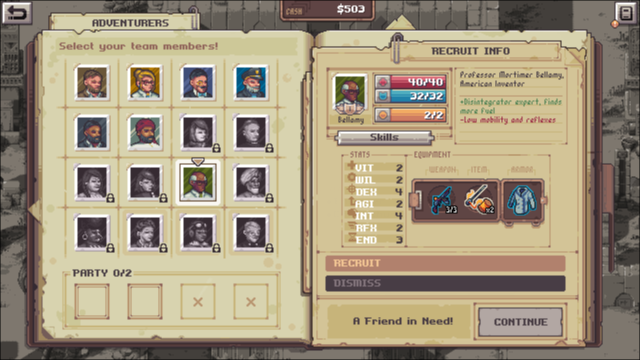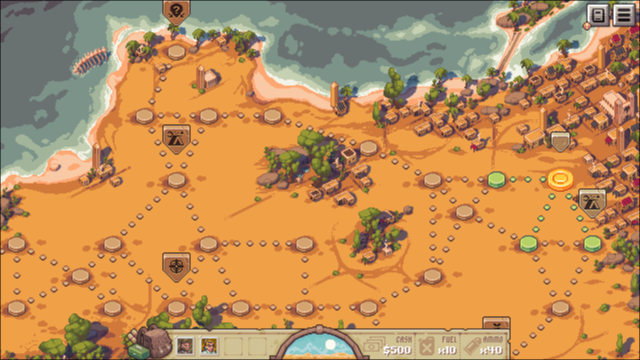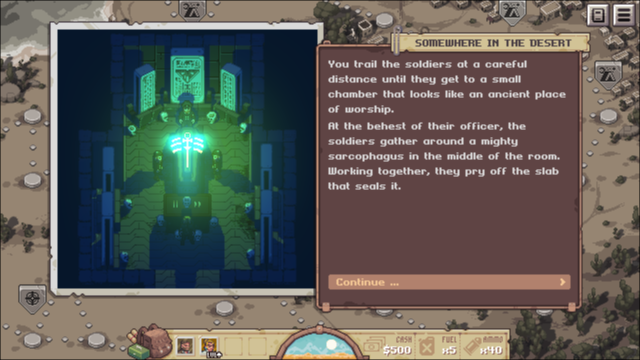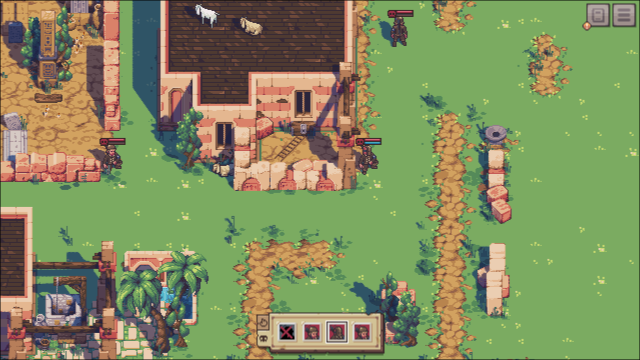The word “pulp” used to be shorthand for cheap magazines printed on cheap wood pulp paper. It has since become more directly associated with the kind of adventure that follows along with games like Uncharted and films like Indiana Jones.
It’s the kind of thing where a group of plucky protagonists (or just one) take on an evil empire (Nazis and cults) and emerge victorious.
Pathway, from Wargroove developer and Stardew Valley publisher Chucklefish, attempts to capture that feeling and setting, and distill it into a turn-based strategy RPG game. Unfortunately, it’s a mixed bag.
Set in the 1930s, Pathway has you making your way through a huge desert. You move through five different adventures, each trickier than the last, and fight through hordes of Nazis, zombies, poor, defenseless dogs who just want to play, and other things that want you dead.

You begin by forming your team, choosing from the characters you’ve unlocked so far. Each of them has their own weaknesses and strengths, things like being a great shot but also being very slow. They can also only wield certain weapons to begin with, so you have to balance who you choose with how you like to play.
They do level up as you go, each time gaining access to one of a few passive buffs or abilities, but none of them are particularly interesting. The characters do have concrete progression, so if a character has leveled up in a run, they will always be that level when you choose them.
Once you’ve chosen your characters, you then get to mess around with the game’s difficulty sliders. One controls enemy health and damage, the other dictates your starting fuel and ammo. Difficulty sliders are a great way to tailor the experience to whatever you need from it, and this is one of the best things about Pathway.

After you’ve done all of this, you set off across the desert on a map full of nodes. You go from one node to the next in a nifty little jeep and use up one unit of fuel as you move. Each movement has a lovely animation of the jeep driving and your team getting out of the vehicle, all of which great character to the game.
However, this sequence quickly becomes incredibly annoying when you are going back to already-explored nodes; you can’t set a path, and instead, you have to go through them one at a time. It almost makes exploring feel like a chore, which means you end up being punished for your curiosity.
This is not the pulp way.
Some of the nodes have events on them, some are random, some have nothing, and some are indicated as special by an icon. You might come across a tomb filled with riches, or you might come across a village that is occupied by Nazis and in desperate need of saving. In the random encounters, there are usually options, such as running away or continuing the fight.
While these moments often shine as memorable and lots of fun, where Pathway starts to feel like a choose-your-own-adventure book, a lot of them, unfortunately, just come down to two choices: fight or flee.
So after a run or two, these start to lose their luster, too.

The fights are incredibly vanilla affairs. Each unit can do a small handful of things. You can attack, move, hide, or use special things like Medkits. Each battle has you placing your team during the planning phase, then moving individual members of your team and attacking the enemies, all before waiting while you hope to avoid the incoming bullets or zombie strikes.
You can also perform special attacks. The trouble is that the special attacks don’t feel very special. It’s not like Final Fantasy Tactics where you do more damage if you attack from behind, or something where you have massive summons. There are just some guns and grenades here. You shoot, they shoot, you heal, they shoot.
It all works fine, but it has no snap. No crackle. No pop. Just a general feeling of “this is fine”.
At the end of the day, the entire game feels a lot like that. Aside from the difficulty sliders and the rather excellent soundtrack, the game is just kind of… fine.
There is nothing wrong with fine — not at all. It just makes it hard to commit to when we are all constant adrift in a sea of excellent games. Finding time for Pathway when you could be playing something else just feels impossible.
The individual ideas here are all interesting, but the execution always feels as though it is lacking. It doesn’t have the soul of a pulp experience in the same way that other games do. It just doesn’t have the special something and it results in a game that is fun, but not memorable, nor essential.
Pros:
- Interesting ideas
- Lovely soundtrack
Cons:
- Nothing really stands out
- Why do I have to kill the dogs?
- Frustrating movement on the map
[Note: A copy of Pathway was provided by Chucklefish for the purpose of this review.]







Published: Apr 23, 2019 08:58 am